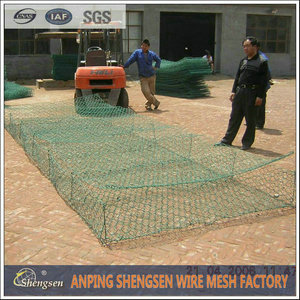Gabion is a mesh cage filled with stones that is used to restrict the flow of water. They work because the stones within the cage form a barrier, which allows some water to pass through the gaps between them while keeping out the bulk of the water. Usually, you will stack several gabions on top of each other to form a wall. They can be effective in the right place and are relatively inexpensive to install.
However, the gabions also have some disadvantages. In the following text I will show you the shortcomings to you.
* Unsightly
It is unsightly, especially after they have been in the water for a long time and the cages have started to rust.
* Space
It takes up a lot of space on a beach, because to be effective you may need to be more than one. This can make the beach a less desirable place to bathe and could also make it look more crowded.
* Not Easily Replaceable
If the cage becomes too rusted or the rocks too worn, you must remove the entire gabion. If the cage that needs replacing is the one at the bottom of a pile, you have to remove all of them, which can make repairs a lengthy and expensive process.
* Equipment Difficult to Source
The grade of rock that is needed to fill a gabion is 3 to 5 inches, which may be hard to find. The cages are not readily available. In addition, because of the size and weight of most gabion cages, you need heavy lifting gear to move them into place.
* Deterioration
Both the cage and its contents will deteriorate over time, which means that you will need to replace them, leading to more expense and greater difficulty locating the resources.
* Limited use
The effectiveness is limited to areas of small drainage areas and intermittent water flow, according to the Environmental Building Design and Construction Portal.
In spite of these disadvantages, gabions are still very useful in environmental protection project. That is to say, its applications are much more important than the advantages.



